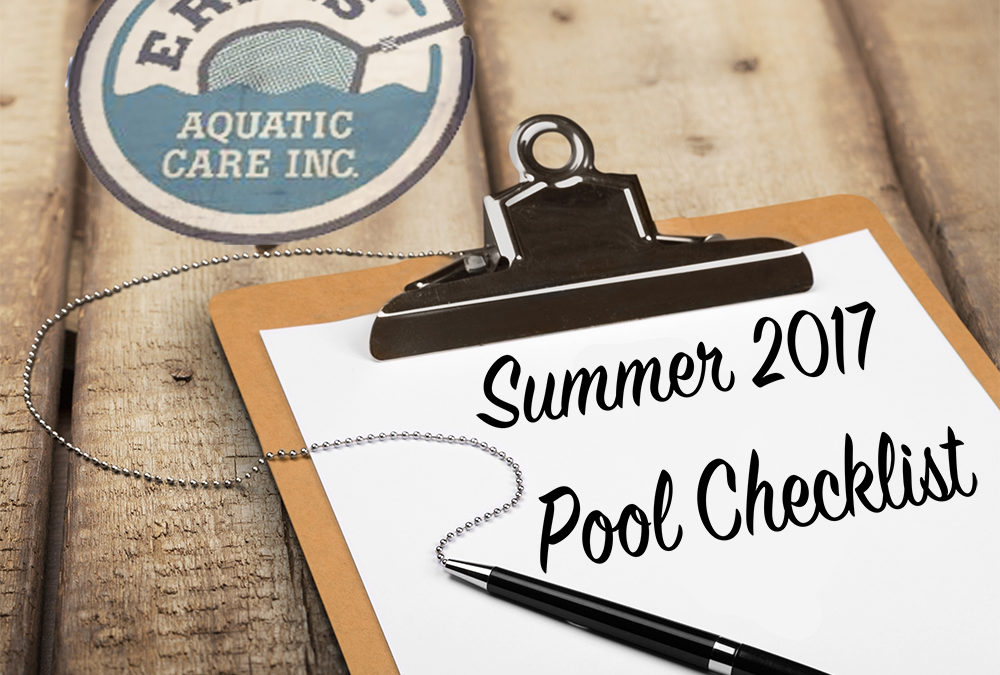Summer is around the corner, unless you live in Florida like we do. Then, it’s summer everyday. For that reason, we decided to put together a checklist for pool owners nationwide. You’re all preparing for summer cookouts and weekly pool parties. Of course we understand that there’s a fair mixture of saltwater pools, chlorine pools and mineral pools out there. Not everyone uses the same chemicals or chemical alternatives, but opening up your pool to your closest friends requires a master checklist.
At some point, make a list of things you need at the store. Grab everything in the beginning or at the end of your checklist. This will make life easier by making only one run instead of multiple trips.
Think about running the dishwasher empty before you use it to clean dishes. Run the pool filter and pump before you swim in it. You can’t just vacuum and shock the water and jump in! Now, let’s get started.
If your pool is covered, remove the cover and properly store it. If it’s not covered, be sure there’s no vegetation, leaves, bugs or dirt floating on the surface.Be sure your pool area is clean and clear of debris. Be sure the bottom is clean of heavy debris as well. Is the tile around the pool clean as well? If not, add that to your list.
Depending on how often you use your pool, the water level may be low. Fill it up according to your pool’s size and requirements. Most pools can handle 1″ of water per hour. Once the water level is high enough, it’ll be safe for you to run the filter and pump. It’s always a smart idea to run the filter continuously, at least for a few hours. This will ensure no pieces are broken or malfunctioning.
Once the pool deck and pool water is clear, it’s time to adjust the chemical levels and shock if necessary. Make sure everything is brought up to optimal levels: pH balance, chlorine (or saline, or mineral additives), any alternatives like bromine, ozone gas, etc. Add algaecide as required, unless you use a mineral system in which case, you may not need extra algaecide. Remember to keep your free chlorine levels between 1-3 ppm (parts per million). If you use Bromine as an alternative, you should keep it between 3-5 ppm. Don’t forget to check the alkalinity, oxidizer and stabilizer levels.
Keep in mind: regular, weekly maintenance is still needed.
Don’t adjust the pH levels more than once a week. Yet, make sure you are in the proper pH range based on your pool’s construction.
“The pH should be in the range 7.4 – 7.7 if the pool has a vinyl or tile finish.
The range should be 7.3 -7.5 if the pool has a fiberglass finish.
The range should be 7.4-7.6 for a gunite swimming pool.”
If you’re a Do-It-Yourselfer, it’s important you know your pool’s systems and how it functions. If not, give your local pool maintenance company a call.
REFERENCES:
http://www.swimmingpool.com/testing-water/basic-pool-care-checklist
Erik’s Aquatic Care is always here to answer questions you may have as a current or future pool owner. Cheers!

